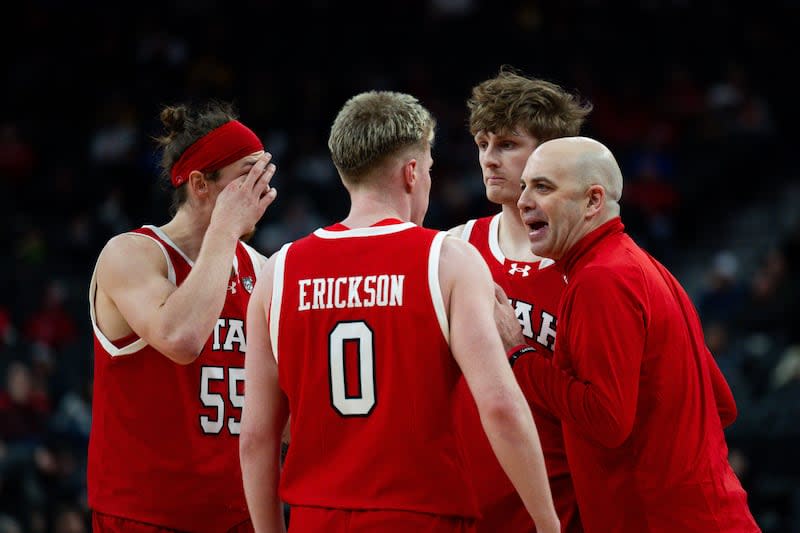State of Utah basketball: How the roster is shaping up with Big 12 membership closing in
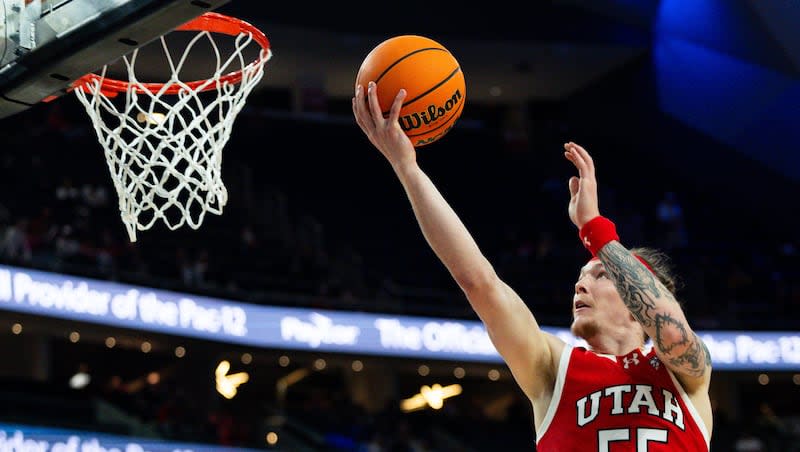
Utah was arguably playing some of its best basketball during the Runnin’ Utes’ NIT run in late March and early April.
Since that time, though, a lot has changed for Craig Smith’s squad.
When Utah joins the Big 12 next season, things will look a lot different — on the court and on the bench.
Due to graduation and attrition, the Runnin’ Utes are having to replace a bevy of experience. Smith must also replace a pair of assistant coaches.
That makes the challenge of preparing for Year 1 in the Big 12, “the toughest conference in men’s college basketball,” even tougher.
“I’ve always said, bring on the competition. I believe in that firmly. And now we are going into the Big 12, which, five of the past six years, has been ranked the No. 1 league on the men’s basketball side,” Smith said after the team’s run at the NIT ended.
He’s about to get his wish.
What does Utah’s roster look like for the upcoming season?
Here’s a look at who’s back, who’s gone and what talent is coming into the Utah program as the Utes set to make their Big 12 debut.
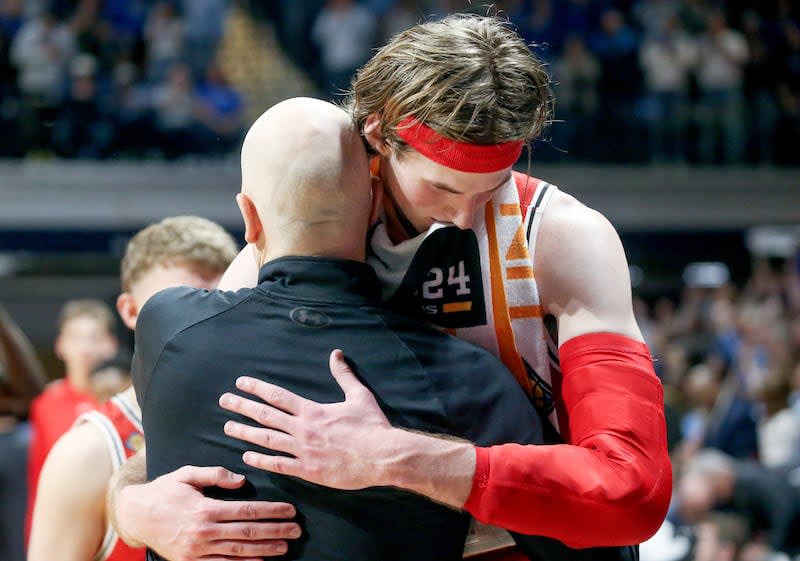
Scholarship players who won’t be returning
Branden Carlson, C — eligibility exhausted.
Cole Bajema, G — eligibility exhausted.
Deivon Smith, G — transferred to St. John’s.
Keba Keita, C — transferred to BYU.
Rollie Worster, G — transferred to Nebraska.
Ben Carlson, F — pursuing pro career.
Wilguens Jr. Exacte, G — transferred to Bowling Green.
Luka Tarlac, wing — in transfer portal.
There’s a lot of experience on this list that won’t be returning next season.
At the top of that list is Branden Carlson, the very definition of a Utah Man who spent the past five seasons starring in the post for the Runnin’ Utes. His production — which included averaging 17.0 points, 6.6 rebounds and 1.5 blocks last season — won’t be easy to replace.
Deivon Smith transferring is also a huge hit, as he flourished in a starring role later in the year during the 2023-24 campaign. Of all the transfers, this is the toughest one to deal with in regards to the upcoming season. The speedy point guard had developed into a triple-double machine and will be coached by Rick Pitino for his final college season.
The veteran and reliable Worster moving on, along with Smith, makes things tenuous at point guard and hurts Utah defensively. Keita was the team’s most promising young talent, and with two years of eligibility remaining, he is headed to rival BYU.
Bajema and Ben Carlson, too, were valuable role players for Utah after coming in as transfers and their production will have to be replaced by incoming transfers.
Utah is also replacing a pair of assistants
Since the offseason began, the Utes have had two assistant coaches leave for other programs — DeMarlo Slocum left for Washington to join former Utah State head coach Danny Sprinkle’s staff in Seattle, while Chris Burgess returned to BYU to serve as an assistant under first-year Cougars head coach Kevin Young.
That leaves Craig Smith not only needing to find on-court replacements but a pair of new assistant coaches as well.
Tramel Barnes, Tyler Larson and Jayden Olson remain as assistant coaches.

Players on scholarship for the 2024-25 season
Gabe Madsen, G, senior.
Mason Madsen, G, senior.
Lawson Lovering, C, senior.
Hunter Erickson, G, senior.
Zach Keller, F, junior.
Miro Little, G, sophomore.
Jake Wahlin, F, sophomore.
Keanu Dawes, F, sophomore.
There’s a dearth of returning talent for the Utes from their first team to make a national postseason tournament in six years — Utah will return only 34.6% of its scoring production from a squad that reached the NIT semifinals.
Gabe Madsen is the team’s leading returning scorer, having averaged 13.6 points per game while shooting 43.6%. Last year, he broke the school single-season record for 3-pointers in a season, making 105, and will be relied upon as a leader and a top scoring option for the Utes in 2024-25.
His twin brother, Mason Madsen, is also joining the program after transferring from Boston College, where he averaged 8.1 points and 3.5 rebounds last season. The brothers played one season together at Cincinnati before going their separate ways, and it will be interesting to see how their chemistry positively impacts Utah’s guard line.
Lovering is back after starting 24 games last year in his first season with Utah after transferring from Colorado. He averaged 6.2 points and 4.7 rebounds last year and helped solidify the defensive end.
Erickson came on strong as a scorer in the season’s last six games last year, averaging 9.5 points during that span. If he can build on that this year, Utah would benefit greatly from having another scoring option.
Wahlin made little impact in his first season following a two-year mission for The Church of Jesus Christ of Latter-day Saints and will likely still be a depth piece going into his sophomore year. He was a highly sought after recruit and a BYU signee before flipping his commitment post-mission.
That brings us to the three other transfers who’ve signed thus far.
Looking at it from a “glass half full” perspective, there’s the possibility here for Utah to transform untapped potential, like what happened with Deivon Smith last season.
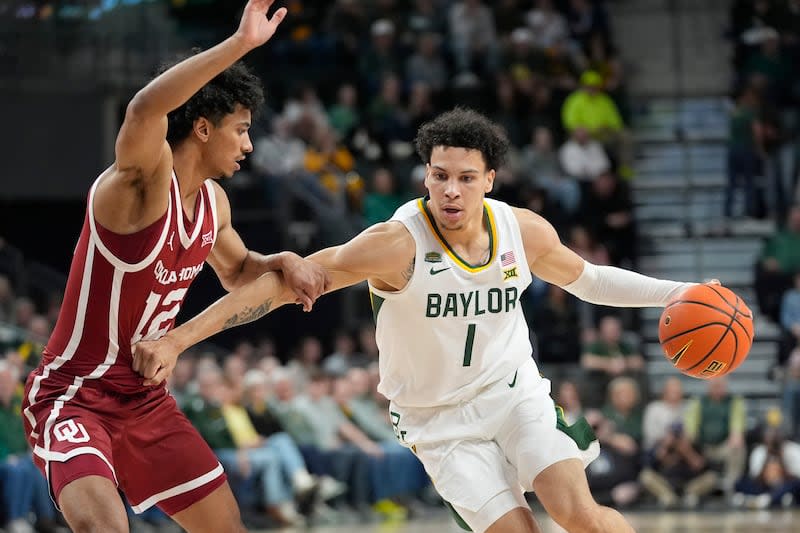
The 6-foot-4 Little earned sporadic minutes as a true freshman at Baylor last year. Based on his pre-college recruitment, when the 19-year-old Finnish native was a four-star prospect and a top 50 player in the 2023 recruiting class, there’s potential for Little to be the team’s starting point guard.
Dawes was once on Utah’s recruiting radar before starting his career at Rice. The Utes were one of several in-state teams trying to sign the forward, who grew up in Utah until he was 9. After a year at Rice, where he averaged 6.6 points and 4.1 rebounds per game, the 6-foot-9 forward will get his chance to show why he was so sought after by Utah schools.
Keller transferred after two years at Wake Forest, where the 6-foot-10 Colorado native struggled to establish a more established role with the Demon Deacons. He started eight games during one stretch last year when others were injured — including scoring 10 points in a loss to Utah at the Charleston Classic — and could be a key depth piece for the Utes.
That leaves Utah with five scholarship spots open for next season. The Utes have played with an open scholarship each of Craig Smith’s three seasons at Utah.
Walk-ons who could be on the 2024-25 team
Caleb Lohner, F, senior.
Brandon Haddock, G, senior.
Jayden Teat, G, sophomore.
Jerry Huang, G, sophomore.
Ayomide Bamisile, F, redshirt freshman.
Among this group, only Teat played any noticeable minutes last year. He briefly earned some increased playing time after Worster was lost and the Utes were trying to sort out their guard minutes.
Lohner is an interesting potential addition for the Utes. He originally signed to play basketball for Utah coming out of Wasatch Academy before being released from the Letter of Intent and signing with BYU.
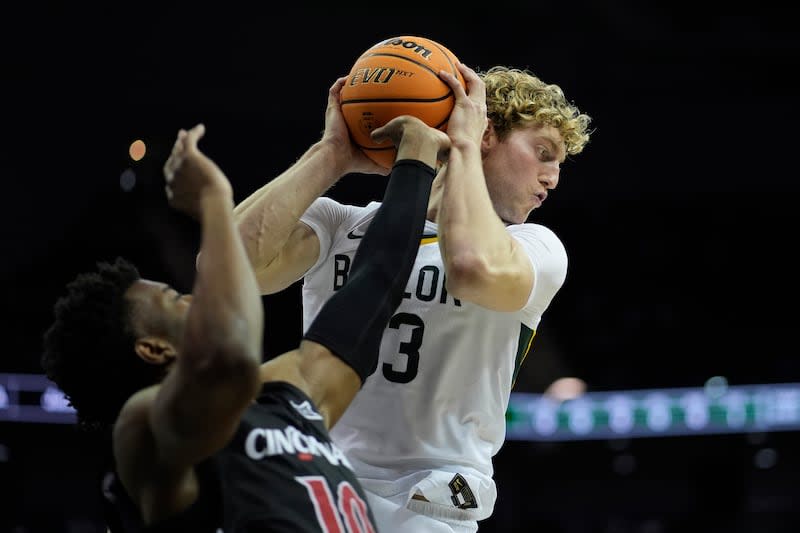
Last week, Lohner announced that he is transferring from Baylor to Utah to play football, while also leaving the door open to play basketball as well.
The 6-foot-8 Lohner played two seasons at BYU, averaging 7.0 points and 6.7 rebounds there, before transferring to Baylor, where he’s played the past two seasons. His role diminished significantly with the Bears, and he entered the transfer portal last month.
Lohner, whose scholarship will be for football, would provide valuable experience and potentially a strong depth aspect to Utah’s basketball program if he ultimately joins the Runnin’ Utes.
What does the positional depth look like right now?
With eight scholarship players and the possibility of Lohner joining the team, here’s a look at what Utah’s depth could look like at each position, while keeping in mind that several other signings are expected.
PG: Little.
SG: Mason Madsen/Erickson.
SF: Gabe Madsen/Dawes.
PF: Wahlin/Lohner.
C: Lovering/Keller.
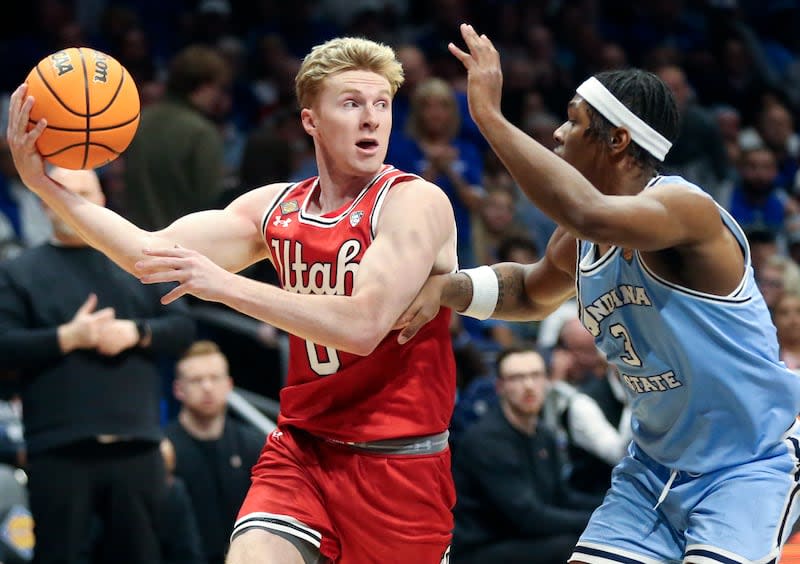
How ready is Utah’s roster for the Big 12?
Given that Utah still has five scholarship positions available at this point, it’s difficult to give a truly definitive answer on how competitive this roster could be in the Big 12 next season.
One thing is for certain: The Big 12 will be a significant step up for the Utes, even from the Pac-12, which had four teams make the NCAA Tournament this past season.
Four Big 12 schools landed in the top five of ESPN’s way-too-early top 25-rankings for the 2024-25 season that was released Monday, a set of rankings that accounts for the amount of talent coming into the league via the transfer portal.
There were six Big 12 teams total in ESPN’s top-25 rankings, including fellow Big 12 newcomer Arizona landing at No. 10.
The Utes, even with their NIT run last year, finished sixth in the Pac-12 regular-season standings with a losing league record (9-11), thanks in large part to struggles away from the Huntsman Center. While they were in the hunt for an NCAA Tournament berth for much of the season, a 2-9 road record sunk those hopes.
Considering how much turnover Utah is seeing this offseason, it’s hard to forecast the Utes experiencing better results than they saw during the 2023-24 season.
How Craig Smith is able to fill the remaining holes on the roster will be vital to how competitive this Utah team will be in its first season in the Big 12.
Three areas of need
Power forward: The Utes are still searching for someone who can score consistently inside. That’s something the three-time All-Pac-12 performer Branden Carlson did so well during his tenure, and as of now, there’s no real answer for someone to provide that scoring punch in the front court.
One of Utah’s highest priorities for the remainder of the offseason should be finding someone who can not only add a solid defensive presence at the four, but someone who can reliably be turned to as a scoring threat — and if possible, be a stretch four like Carlson developed into. He made 64 3-pointers last season, second-most on the team.
Point guard: While the Little signing, which became official Monday, gives Utah a potential starter at the point guard position, the Utes need more depth there and more clarity as to who they can turn to with Deivon Smith and Worster gone.
Mason Madsen could rotate in there and Erickson provided minutes last season as a backup point guard after Exacte was lost for the season, but he appeared at his most comfortable when being able to be off the ball and contributing offense from a more shooting guard-type role.
Adding an additional point guard-centric player will be critical to helping players be best utilized in their intended roles.
Center: While Lovering returns for his senior season, the Utes could use more depth at the five. Keller has played more at the four, and Lovering had a tendency to get into foul trouble last season. With Keita and Carlson gone, the Utes’ experience at the center position took a big hit.
The question is, should Utah favor experience at the center position, or more raw talent, to help provide depth?
